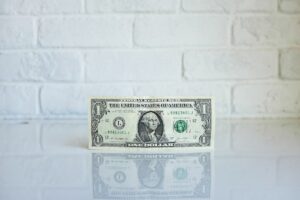The Basics of Forex Currency Conversion: Understanding Exchange Rates and Currency Pairs
Forex, or foreign exchange, is the largest financial market in the world, with trillions of dollars traded every day. It involves the buying and selling of currencies in order to make a profit from the fluctuations in their exchange rates. In order to successfully trade forex, it is essential to have a good understanding of exchange rates and currency pairs.
Exchange Rates:
Exchange rates are the rates at which one currency can be exchanged for another. They are determined by various factors such as interest rates, economic performance, political stability, and market sentiment. Exchange rates are constantly changing and are influenced by a multitude of factors, making them highly volatile.
Exchange rates are usually expressed in pairs, such as USD/EUR or GBP/JPY. The first currency in the pair is called the base currency, while the second currency is called the quote currency. The exchange rate indicates how much of the quote currency is needed to buy one unit of the base currency.
For example, if the exchange rate for USD/EUR is 1.20, it means that 1 US dollar is worth 1.20 euros. If you want to buy euros using US dollars, you would need to exchange 1.20 dollars for every euro.
Currency Pairs:
Currency pairs are the instruments that traders use to buy and sell currencies in the forex market. There are three types of currency pairs: major pairs, minor pairs, and exotic pairs.
Major pairs are the most commonly traded pairs and include the US dollar as one of the currencies. Some examples of major pairs are EUR/USD, GBP/USD, and USD/JPY. These pairs have high liquidity and are typically less volatile than minor and exotic pairs.
Minor pairs, also known as cross-currency pairs, do not include the US dollar. Examples of minor pairs include EUR/GBP, GBP/JPY, and AUD/NZD. These pairs are less liquid and can be more volatile than major pairs.
Exotic pairs involve currencies from emerging or smaller economies. Examples of exotic pairs include USD/TRY, USD/ZAR, and EUR/TRY. These pairs are highly volatile and have lower liquidity compared to major and minor pairs.
When trading forex, it is important to choose the right currency pairs based on your trading strategy and risk tolerance. Major pairs are often preferred by beginners due to their liquidity and lower volatility. However, experienced traders may find opportunities in minor and exotic pairs due to their higher volatility.
Factors Affecting Exchange Rates:
Exchange rates are influenced by a wide range of factors, including economic indicators, monetary policies, political events, and market sentiment. Here are some key factors that can affect exchange rates:
1. Interest Rates: Higher interest rates tend to attract foreign investors, increasing the demand for a currency and raising its value. Conversely, lower interest rates can lead to a decrease in demand for a currency.
2. Economic Performance: Strong economic performance, such as high GDP growth and low unemployment rates, can lead to a stronger currency. Conversely, weak economic performance can lead to a weaker currency.
3. Political Stability: Political events, such as elections or political turmoil, can affect exchange rates. Uncertainty or instability can lead to a decrease in demand for a currency.
4. Inflation: High inflation can erode the value of a currency over time. Central banks often raise interest rates to combat inflation, which can lead to an increase in the value of the currency.
5. Market Sentiment: Market sentiment, or the overall mood of traders and investors, can also affect exchange rates. Positive sentiment can lead to an increase in demand for a currency, while negative sentiment can lead to a decrease in demand.
Conclusion:
Understanding exchange rates and currency pairs is essential for anyone looking to trade forex. Exchange rates determine the value of currencies and are constantly changing due to various factors. Currency pairs are the instruments used to trade forex, with major, minor, and exotic pairs offering different levels of liquidity and volatility.
By keeping track of economic indicators, monitoring monetary policies, and staying informed about political events, traders can make informed decisions about which currency pairs to trade. It is also important to consider risk management techniques and develop a solid trading strategy to navigate the highly volatile forex market.
Remember, forex trading involves risks, and it is important to thoroughly educate yourself and seek professional advice before entering the market.





